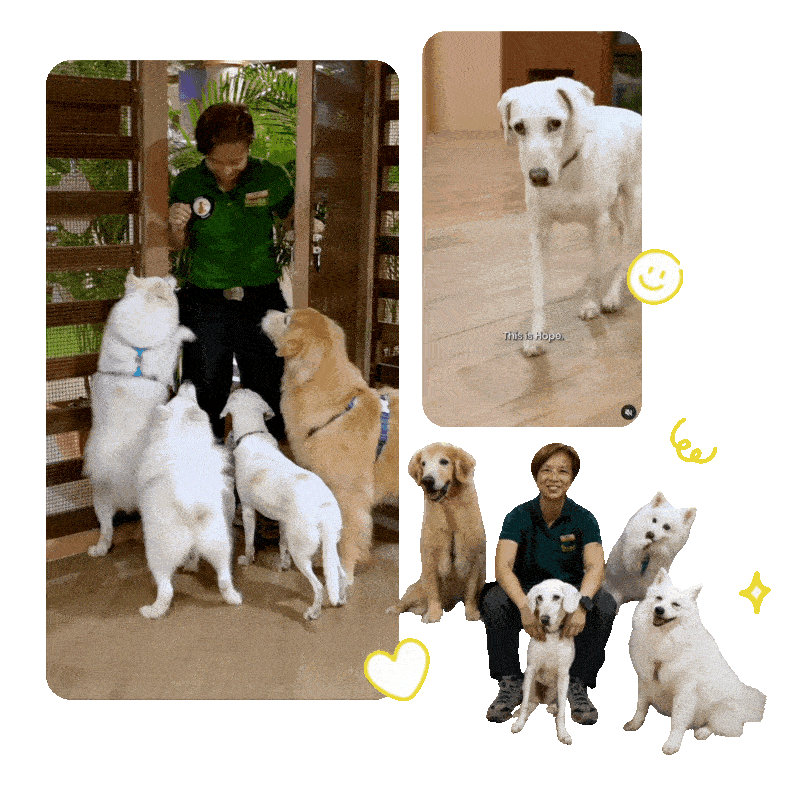Long-Term Barking Management Plan for Snooffles
Bark
Bark
🐾 Goals of This Plan:
Teach impulse control and reduce excessive alert barking.
Reinforce quiet, calm behaviors around noises, strangers, and other dogs.
Encourage appropriate social interactions while preventing excessive group barking.
Provide enrichment and structured engagement to prevent boredom-driven barking.
Need a refresher on the previous Lessons?
Daily Routine for Ongoing Management
🕐 Morning:
Training session (5-10 minutes): Practice "Quiet Cue Training" with controlled noise exposure.
Structured walk (15-20 minutes): Include sniff breaks and “Look at Me” exercises to reinforce focus around distractions.
Interactive play or mental stimulation: Rotate puzzle toys, tug games, or scatter feeding to reduce excitability.
🕐 Afternoon:
Calm reinforcement: If external sounds trigger barking, use white noise or calming background music.
Socialization practice: Controlled exposure to known dogs or people while reinforcing calm greetings.
Rest and independent play: Provide a chew toy or lick mat to encourage independent relaxation.
🕐 Evening:
Controlled exposure to noises: Play doorbell/knocking sounds at a low level while rewarding calm behavior.
“Place Training for Visitors” session: Practice guiding her to her bed or crate when the doorbell rings.
Wind-down routine: Short walk or sniffing session followed by a quiet activity (chew, licking mat) to promote relaxation.
Weekly Training Structure
✅ Monday - Wednesday: Quiet Cue & Noise Desensitization
Teach "Quiet" by rewarding silence right after barking starts.
Introduce low-volume doorbells and knocking sounds, gradually increasing intensity.
Reinforce focus exercises ("Look at Me") when she notices sounds or movement outside.
✅ Thursday - Friday: Socialization & Stranger Exposure
Practice controlled greetings with strangers or visitors by reinforcing calm observation.
Reward calm behavior before allowing her to engage with people or dogs.
Continue reinforcing "Place Training" to help her settle when guests arrive.
✅ Saturday - Sunday: Group Barking Management & Structured Engagement
Introduce alternative activities (recall games, puzzle feeders) when she joins in group barking.
Reward independent play to encourage confidence without excessive vocalization.
Rotate enrichment games to maintain variety and engagement.
🐶 Need a helping paw?
Get personalized guidance from Natalie at an unbeatable price!
✨ Just $15 for a 20 minute 1-on-1 consult – because every good dog (and owner) deserves great advice! ✨
Ongoing Adjustments & Milestones
📌 Month 1-2: Establishing the Basics
Reinforce "Quiet" consistently to reduce automatic barking responses.
Create a structured, predictable environment to reduce unnecessary excitement.
Track barking incidents to monitor patterns and progress.
📌 Month 3-4: Expanding Training & Increasing Generalization
Practice noise desensitization in different environments (e.g., outside, at a friend’s house).
Strengthen her ability to disengage from triggers by increasing the duration of focus exercises.
Continue reinforcing structured greetings with new visitors.
📌 Month 5+: Long-Term Maintenance & Preventing Regression
Gradually reduce treat frequency, replacing them with verbal praise and engagement rewards.
If barking increases, revisit foundational exercises like "Quiet" and "Place Training."
Maintain enrichment variety to prevent boredom-driven vocalization.
Additional Support
🧩 Mental & Physical Enrichment
Rotate high-value puzzle toys to keep Snooffles mentally engaged.
Use sniffing games, nose work, and scent walks to channel her energy productively.
Ensure physical exercise includes structured engagement (not just free running).
🏡 Environmental Management
Maintain background noise to reduce sensitivity to unpredictable sounds.
Create a safe retreat space where she can go when overstimulated.
If barking continues during group interactions, introduce short breaks or structured activities.
🌿 Stress Reduction Aids (if needed)
If reactivity persists, consider calming pheromone diffusers or anxiety-reducing supplements.
Encourage independent relaxation by providing long-lasting chews or licking mats.
Barking Box – Keep Your Dog Busy & Happy!
Turn “woof woof” into “wow, this is fun!” with the Barking Box—a paw-some bundle designed to keep your pup entertained, engaged, and barking less! Packed with yummy treats, exciting enrichment toys, and easy-to-follow guides, it’s the perfect way to channel all that energy into positive play.
Keep your pup’s mind busy and their tail wagging!
Final Thoughts
Snooffles’ barking is a mix of alertness, excitement, and social communication, which means structured training and engagement will be key to reducing excessive vocalization. By reinforcing calm behavior, teaching appropriate responses to noises, and providing enrichment, she will develop better impulse control while staying happy and confident.
With consistency, positive reinforcement, and gradual exposure, Snooffles will learn that calmness is rewarding and excessive barking is unnecessary. 🚀🐶





